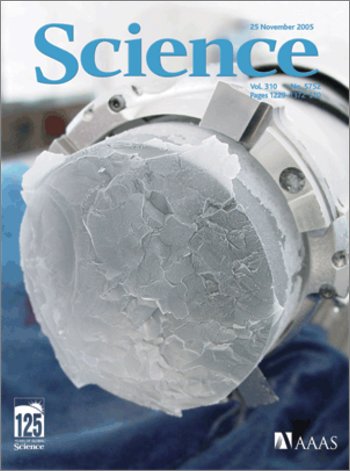By Daniel Glick, Scientific American, April 25, 2011
Climate science research often involves a little derring-do mixed in with a lot of tedium. Some scientists scramble up equatorial peaks to measure melting glaciers; others scour dry African lakebeds for sediment that reads like a talking science book.
For paleoclimatologist James White, adventures begin when a C-130 transport plane drops him and his team in the middle of Greenland's ice cap. In conditions that redefine the word "cold" for this native Tennessean, White drills through ancient ice to unlock clues to the Earth's past climate – and predict its future.
In between Greenlandic swings, the 57-year-old White spends a lot of time in front of a mass spectrometer. It's not pure tedium, but it pales in comparison to doing fieldwork in minus-30 degree summer weather, with 60-mile-an-hour winds howling and expensive scientific instrumentation freezing at inopportune moments. His fieldwork and lab work have led to sobering revelations about how fast the planet can heat up. "We've seen changes of five degrees to six degrees Celsius happen in just a few years," he says. "These are time scales that human beings can get excited about."
White's academic career didn't exactly get off to an auspicious start; even his dad bet against him finishing college. He graduated from the University of Florida, majoring in chemistry but dreaming about oceanography. White went to Columbia for grad work, under the tutelage of climate science pioneer Wally Broecker. By a random draw, Broecker handed out research assignments; one of White's colleagues was sent to the Pacific to study coral reefs and battle sunburn, while White was tasked to study isotopes in tree rings in the northeastern U.S. and fight black flies and mosquitoes.
White soon decided the oceans weren't big enough, anyway. He wanted to "study the Earth." He worked with groundbreaking scientists like Broecker, James Hansen and the late Steve Schneider, just as the "greenhouse gas effect" was gaining scientific weight. White immersed himself in the carbon cycle, stable isotope ratios, and solar radiation fluctuations, trying to fathom their interactions. Scientists already understood that heat-trapping gases in the atmosphere made Earth inhabitable, but they had begun to realize that too much of this good thing was going to cause problems for humanity.
White began working on ice cores, the most reliable and accurate way for paleoclimatologists to recreate past climates – and past climate changes. The annual accumulation of snow in the Arctic, Greenland and Antarctica contains isotopic markers of the temperature at the moment it fell, as well as telltale traces of atmospheric components – from carbon dioxide to barium. Year after decade after century after millennium, these compressed snow layers trap air bubbles in them and become buried ice vaults, locking data into retrievable troves of climate and atmospheric information. Think of it as a mile-deep frozen filing cabinet.
Today White directs the Institute of Arctic and Alpine Research here in Boulder and teaches at the University of Colorado, where he helped create the interdisciplinary Environmental Studies Department.
White's ice–core studies helped reveal two striking facts. The first is that the Earth's great ice ages are bookmarked by a clear fluctuation in carbon dioxide levels: 180 parts per million (ppm) in the glacial periods, 280 ppm in the warmer periods (the level at the beginning of the Industrial Revolution about 150 years ago). A shift of 100 ppm in CO2 concentrations meant the difference between flowers blooming in the Arctic and ice a mile deep over Chicago.
The second fact is more worrisome, and led to White's seminal 1989 paper in the prestigious science journal Nature: These global transformations happened fast. Warming trends that forced widespread ice melting and monumental sea-level rise weren't a millennium-long process. It was decadal.
At first, White was convinced that humans would understand the obvious implications of his ice-core data: The consequences of human-caused climate change "would basically cripple any kind of modern society." Then they'd quickly figure out alternatives to filling the atmosphere with burned fossil fuels.
Today it is obvious to White that society doesn't understand the risks. As people keep adding carbon dioxide to the atmosphere, humanity could throw the Earth's climate out of whack in a geological hurry.
Five years ago the planet hit 380 ppm CO2 in the atmosphere – 100 ppm above preindustrial levels. "It was one of the most unheralded and important milestones in human history," White said. "Our impact on the planet is not small."
Those impacts are accelerating: Today concentrations stand at 392 ppm. White is clearly frustrated with the political climate that seems to be changing a lot slower than the planet's climate, and he's concerned that the Earth's future will likely look a lot more like its steamier past – a lot sooner than we might like.
Daniel Glick, a former Newsweek correspondent, is co-founder of The Story Group. The Daily Climate is a nonprofit news service covering climate change.
On the web:
This article originally appeared at The Daily Climate, the climate change news source published by Environmental Health Sciences, a nonprofit media company.

No comments:
Post a Comment